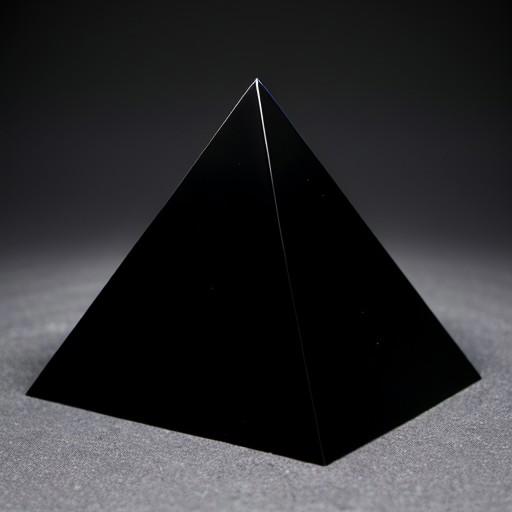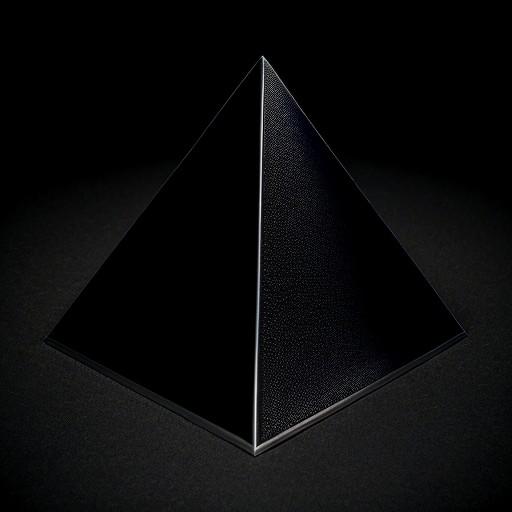Preface
When I started with AI image generation I tried to add a pyramid to a field of roses. That was much more complicated than expected. Most of the time the pyramid looked like a real egyptian one with a rough surface and a smooth or other type of tip.
The new LoRA I created works after one creation try out of the box with quite good results. My magic wand LoRA is more complicated to handle than the pyramid.
The reason for the last statement is simple. Everybody inclusive AI knows how the sizes of a pyramid are in the real world normally. It makes no difference if it is an Egyptian pyramid or a Maya pyramid.
What the LoRA Does
Creates a black pyramid or modifies a pyramid. The modification should be a black pyramid with shiny sleek sides.
Training Images
For the first attempt of the LoRA creation, I have prepared a set of 15 training images. All images look like the black pyramid in Figure 1. The background is slightly different and the size of the pyramid changes slightly.
 Figure 1: Black pyramid with blurry background
Figure 1: Black pyramid with blurry background
All images have a size of 512 x 512 pixel. In sum I used 320 images for the training. Mirroring and buckets of different size results in the number of total training images.
Self-criticism
After working with the new LoRA I took a look at the trainings images and figured out, that some of the images are not the way, they should be.
 Figure 2: Bad trainings image
Figure 2: Bad trainings image
As one can see if one take a closer look, or if the image is for a review large enough, the surface is not smooth, as it should be for the realisation of my idea.
The frame or a frame around the sides is for the first versions of the LoRA model acceptable.
To-Do
Improvement of this documentation.
Preparation of better trainings images for the next version of the LoRA model.
Final Words
Have a nice day. Happy LoRA testing. Be inspired!





